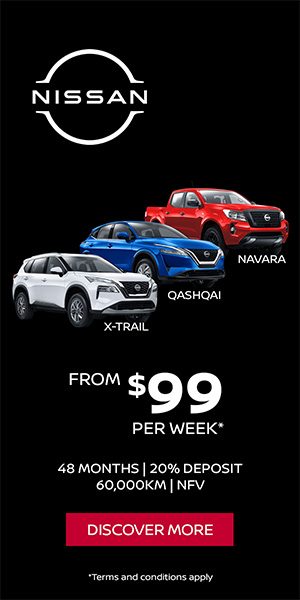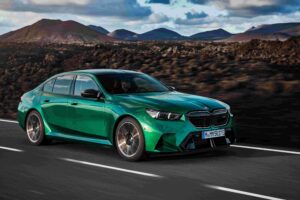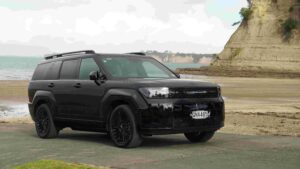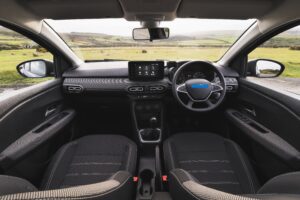Well 69 seconds to be exact.
Having recently been behind the wheel of the latest Honda Civic hatch and the new (and impressive) Civic Type-R, it seemed only right to visit the Swindon plant to see where and how they had been created.
Call me a bit of a geek if you like, but I am actually fascinated by how things are made. The process involved in creating the everyday things I use has often resulted in me whipping out a screwdriver and delving inside. Obviously, this interest is heightened when it comes to cars (although, I’m more of a spectator when it comes to vehicle mechanics). So, with the memory of driving around the coastal and country roads of the Rodney District in the Honda Civic Type-R still very fresh in my mind, I was particularly keen to see that actual model being built. Honda UK was more than happy to oblige.
 Established in 1985, the Honda factory is set to the northern end of Swindon on grounds that used to be owned by military aircraft manufacturers Vickers Supermarine (they still use the old runway as part of their test track). The site is approximately 370 acres in size (210 Football pitches) and although began humbly conducting PDI’s (Pre Delivery Inspection) for Rover models that had Honda engines, it now employs 3,700+, has produced over 3 million vehicles, exports to over 70 countries, is Honda’s European flagship factory and the global production hub for the 10th gen Civic hatchback. Needless to say, it’s a finely tuned machine of a place that produces around 790 cars per day – yes PER DAY.
Established in 1985, the Honda factory is set to the northern end of Swindon on grounds that used to be owned by military aircraft manufacturers Vickers Supermarine (they still use the old runway as part of their test track). The site is approximately 370 acres in size (210 Football pitches) and although began humbly conducting PDI’s (Pre Delivery Inspection) for Rover models that had Honda engines, it now employs 3,700+, has produced over 3 million vehicles, exports to over 70 countries, is Honda’s European flagship factory and the global production hub for the 10th gen Civic hatchback. Needless to say, it’s a finely tuned machine of a place that produces around 790 cars per day – yes PER DAY.
From an actual Honda model point of view, the car plant began by building the Accord in 1992 and has gone on to produce the Jazz, CR-V, 5 generations of Civic and (now) 3 generations of the Civic Type-R.
My tour ‘schedule’ changed three or so times and this was due to the specific time that the Type-R was to hit the production line – which confused me a little. I had no doubt that the Type-R would be a limited run length, but they (Honda UK) were very exact on my visit ‘window’ – it all made sense when I got there.
Everything; and I really mean everything, runs to an exact timetable. From materials and deliveries, through to production, testing, and shipping, they all work on time, every time. Even the plant’s four canteens have an exact schedule to stick to in order to process the 700 people per shift. Once you have chosen your meal (from a wide selection of carefully prepared menu options), each kitchen has a target of a mere 7 minutes to prepare it and have you sitting down to eat. But you’re not here to talk about food.
At first glance, the Honda facility is essentially what you’d expect, a fairly noisy industrial factory. It’s a satisfying hive of activity complete with a hint of motor oil and a giant dollop of elbow grease. Machines and humans cohabitating under one expansive roof, each with predetermined, set jobs to do, there’s a lot for your senses to take in.
With the initial visual impact still filtering through, we headed down to the belly of the beast, just in time to see the Type-R begin to be created.
The production line is 400m long and is horseshoe shaped (this is so workers at the start can see the finished product roll past behind them). The line itself has 13 actual ‘zones’ and these are all effectively sub-sectioned to ‘69 second’ teams (they used to be ‘84 second’ teams but continual efficiency improvements have found another 15 seconds). These teams each have a particular function, their part to play in the construction of a Honda vehicle, in this case, the Civic Type R. The first few seconds are taken up by checking the work done by the team before them, then it’s their turn. From AC unit to dashboard, suspension struts to the grille, each team has around 60 seconds to collect the vehicle part or parts from the distribution trolley, select the right tools and effectively connect the dots.
On the subject of getting it right. As any mechanic will tell you, putting an engine into a vehicle is a very involved process. There are numerous pipes, tubes, wires, and connectors that all need to be in the right place and it’s a bit of a nailbiter just before starting it up. Well, maybe not for Honda. In the past 31 years, the engines in the Honda plant have accumulated a ‘right-first-time’ percentage figure of 99.9997% – even the percentage figure is exact.
The Swindon plant is still expanding and with its increased production demands it has recently received a rather handsome financial investment. Much of this has gone to the glazing area – and it’s awesome.
Last to go in is the furniture and wheels. Every 7 minutes, lorries arrive armed with front and rear seat packs (and wheels) to meet with their intended host vehicles – this ‘Just in time’ system ensures component flow and eliminates storage in the production area. Each car takes just four hours to go from shell to completion – now that’s quick.
Once the assembly is finished, EVERY CAR undergoes 70 individual vehicle tests, from checking the lights to checking the driver safety aids. People with folded arms and stern faces go over every inch of the paintwork and their tilted heads check the vehicle lines and panel gaps – I was frightened just watching. Then it’s taken out to the test track that has 5 different road surfaces to play on. A final VQ (vehicle quality check) upon its return and the car is ready to go. Needless to say, vehicle transporters arrive at just the right time to whisk them away.

For more reviews and experiences click here










